Game Spotlight: SimplyFun Games- Board Games for Early Elementary.
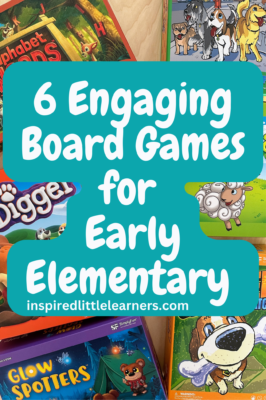
Gameschooling has become an important part of our daily learning, and I am always looking for games that we can play together that allow my kids to build on the skills they are working on! I recently purchased our first games from SimplyFun and we are hooked! The games are perfect for families to play together (most can be played in 30 minutes or less) and the game materials are durable and high-quality. The games are also educational! I also appreciate that the SimplyFun website and the instruction booklets include suggestions for how you can adapt the games- for example, ways to modify the game play to increase (or decrease) the level of difficulty. This makes it possible to play the game with a wider age range of kids and also increases the lifespan of the game! Most importantly, these games are FUN and engaging and games that my kids WANT to play!
Below I have listed 6 games by SimplyFun that I think are great for Early Elementary (roughly ages 5-7), although, I think older kids would also enjoy these games!
This post may contain affiliate links. As an Amazon Associate and participant in other affiliate programs, I earn a small commission on qualifying purchases (at no additional cost to you). Thank you for your support! Read our disclosure policy here.
Digger’s Garden Match
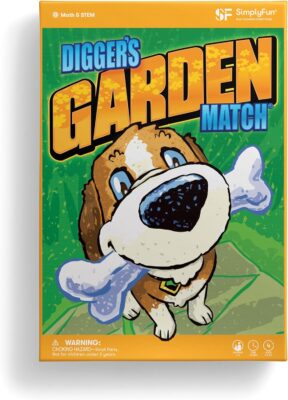
Digger’s Garden Match by SimplyFun is perfect for kids ages 4 and up, who are practicing colors, shapes, counting and matching skills! Players take turns laying tiles to match color or shape. After matching a tile, players count how many shapes are on the tiles they matched and move their dog bone along the board to score points. The first player to reach 50 points wins! In addition to matching colors and shapes, this game is great for counting practice using 1:1 correspondence. It’s also a great game for practicing early strategizing skills, as players decide which tile to play in order to maximize how many points they score on a turn!
Game Skills: Shapes, Colors, Counting, Matching, Spatial Reasoning
Team Digger
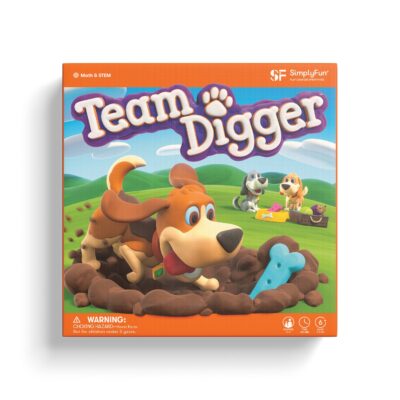
We own a few pre-coding games, but one thing that sets Team Digger apart is that it is a cooperative game. I like the setup of the board, because it is a 3×3 grid that you rearrange each time you play the game. This setup is great for keeping the gameplay fresh each time you play! During the game, players take turns playing a sequence of cards to move their dog on the board. You want the dogs to move to specific spots on the game board with hidden items to “dig” up the item. Because it is a cooperative game, players can talk about what sequence they are going to play and players can even trade cards during their turn in order to reach a hidden item. I like this aspect of the game, because it provides a good opportunity to talk about strategy and plan ahead for what sequence each player should play during a round.
Game Skills: Sequencing, Spatial Reasoning
Alphabet Woods
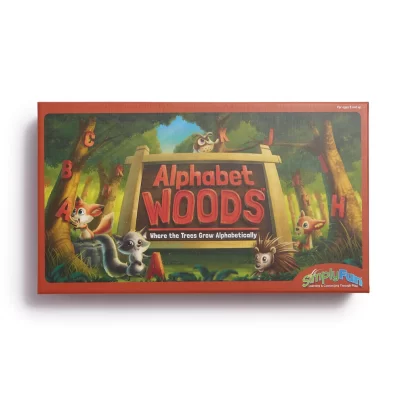
As I was teaching my kids to read, we focused on phonics and learned letters based on how frequently they appear in English words, rather than learning the letters in alphabetical order. However, the ability to sequence and alphabetize is very important to learn! Think about how often you use your ability to alphabetize- whether it’s being able to quickly look through the index of a book, being able to find the book you are looking for at the library or organizing lists. As my kids became more familiar with the letter sounds, I realized that they were not as familiar with alphabetical order. I was so happy once I found this game to help us practice alphabetizing in a fun way! Gameplay for this game is fairly simple: you grow trees by playing cards in alphabetical order. But there is also some strategy involved in the gameplay, as you can play more than one card per turn. For each card you play, you collect a forest animal. The player with the most forest animals at the end of the game wins!
Game Skills: Alphabetizing, Sequencing
Clover Leap
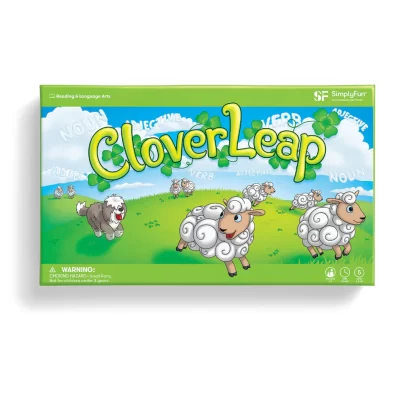
When I got the game Clover Leap, I was expecting it would be a fun game to introduce basic sentence structure and to practice reading skills, but what I was not expecting was how much LAUGHTER there would be! My kids love this game! During gameplay, you move your sheep tokens around the board to collect clover tiles. On each clover tile is a word – the clover tiles are also color coded to introduce different parts of speech: pronouns, verbs, adjectives and nouns and to teach basic sentence structure. As a player collects clover tiles, they place tiles in the correct sequence to form a 4-word sentence. But often the sentences are very silly, which always gets my kids laughing!
One thing that I really appreciate about this game is that children do not need to be able to read the words on every tile in order to play the game. This makes it a great game for early elementary age kids who may be *just* starting to learn to read, but is also great for older kids to practice reading all of the words on the tiles!
Another aspect of the game that I really appreciate is how SimplyFun designed the clover tiles. Each part of speech is a separate color, and the tiles are color coded so that kids can easily see what order the clover tiles should be lined up to create a sentence. This makes it a game for kids to practice their sequencing skills!
Game Skills: Sequencing, Sentence Structure, Vocabulary
*Clover Leap was gifted to me in exchange for a post on Instagram. I included the game in this list, because it is a board game that we really enjoy!
Glow Spotters
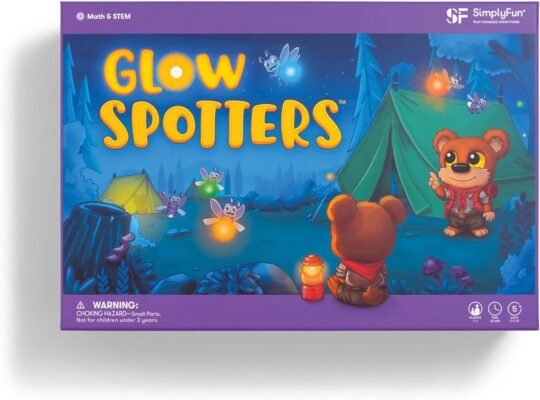
Glow Spotters by SimplyFun is a math game we just discovered! During gameplay, players learn various ways to reach sums 1 through 10. It’s a great game for developing number sense and being able to see numbers in patterns. Each player has 10 Firefly Boards (one for each number 1-10). Players take turns collecting Glow Tiles to fill their boards. The Glow Tiles are numbers 1-5 arranged in different patterns. Players must collect Glow Tile patterns that will fit the open spaces on their boards. Players work on filling two Firefly Boards at a time. Once a player completes a board, they say the equation they used to reach the sum. For example, “2 + 2 + 3 = 7”. The first player to complete all ten of their Firefly Boards wins!
Game Skills: Addition, Spatial Reasoning
*Glow Spotters was gifted to me in exchange for a post on Instagram. I included the game in this list, because it is a board game that we really enjoy!
Walk the Dogs
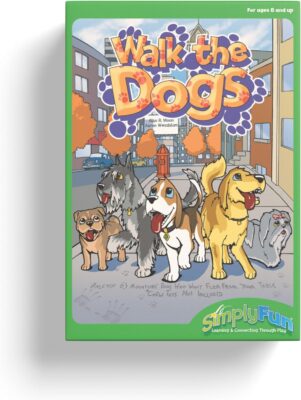
This game is suggest for kids ages 8+, but is a great example of how a game can be modified to play with younger players! (I have played this game with both my 5- and 6-year-olds.) During the game, players choose dogs to add to their own line of dogs. The object of the game is to line the dogs up, so as many dogs of the same breed are next to each other. But, you can only add dogs to the front or back of your line. This means that players need to predict and plan ahead to know what dogs may be available to collect on their next turn. In addition, children are using skills like comparing (for example, which dogs are the same breed) and counting as they line up their dogs. At the end of the game, you use multiplication skills to add up your points. If playing with younger kids, this may be a part of the game that they need assistance with, but is great early exposure to multiplication!
Game Skills: Counting, Categorizing, Multiplication
You may also be interested in these posts:
8 Math Games to Practice Simple Addition
5 Cooperative Board Games for 5-year-olds
Favorite Board Games for 4-year-olds
Favorite Board Games for 5-year-olds (coming soon)
Favorite Board Games for 6-year-olds (coming soon)
